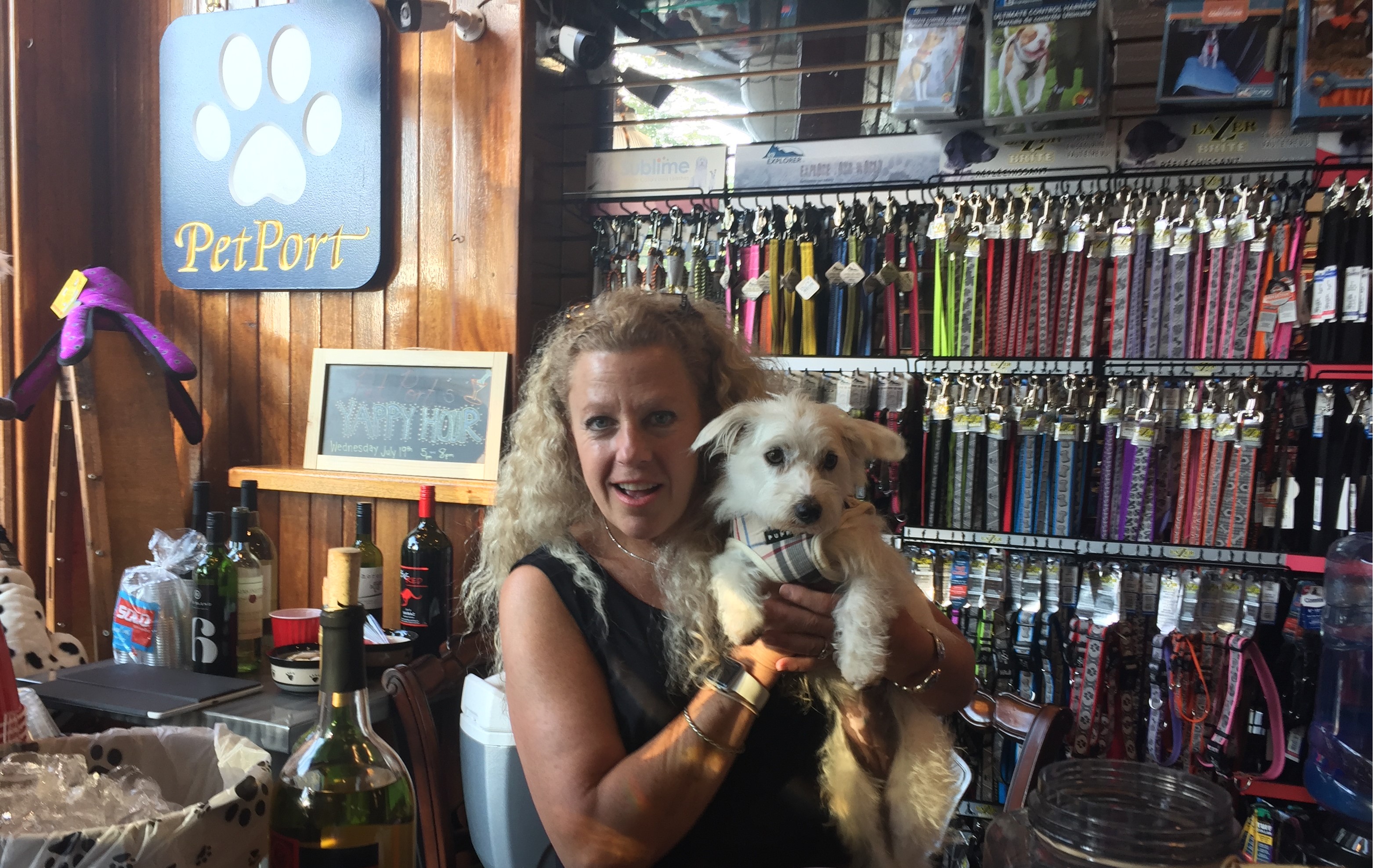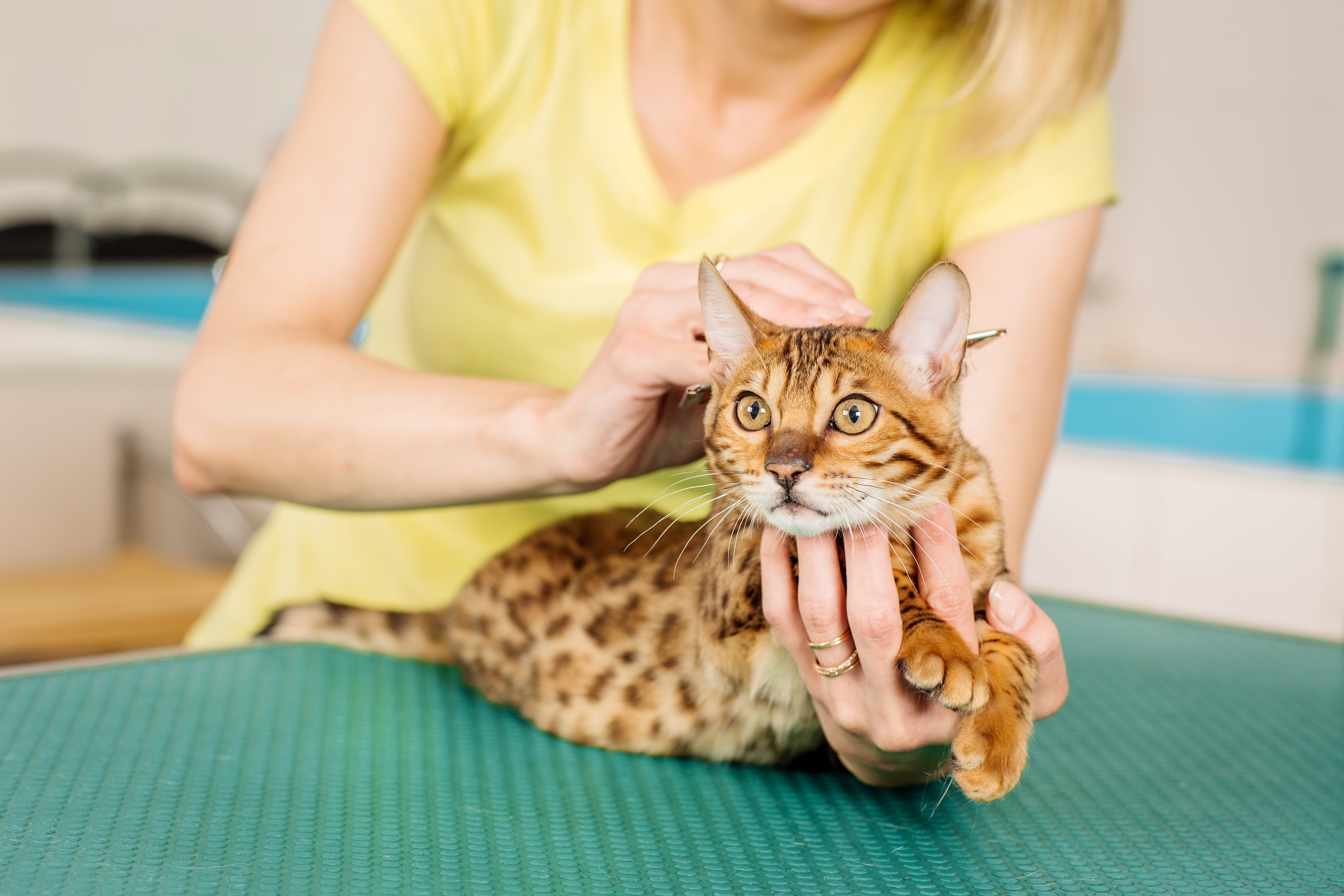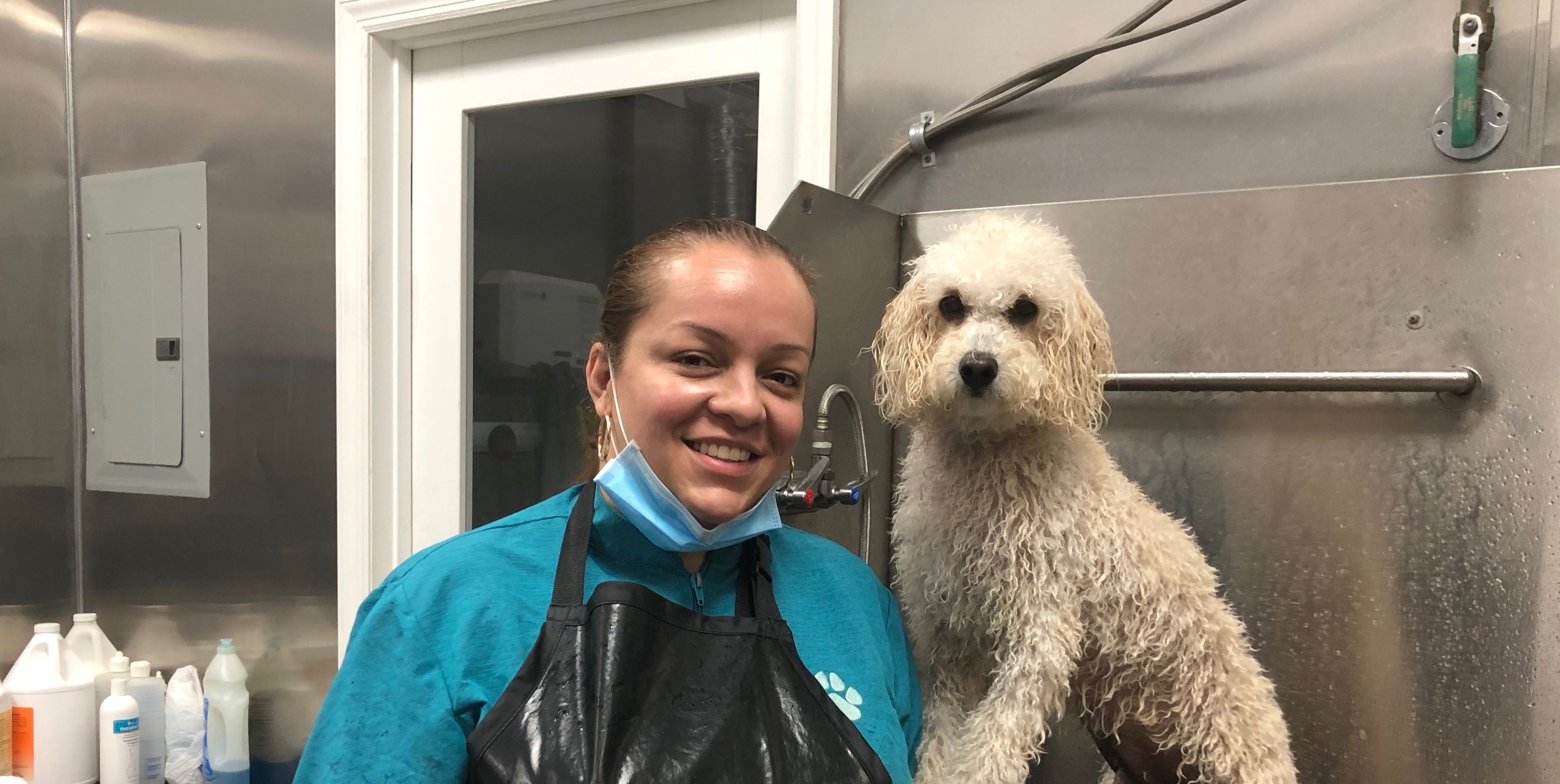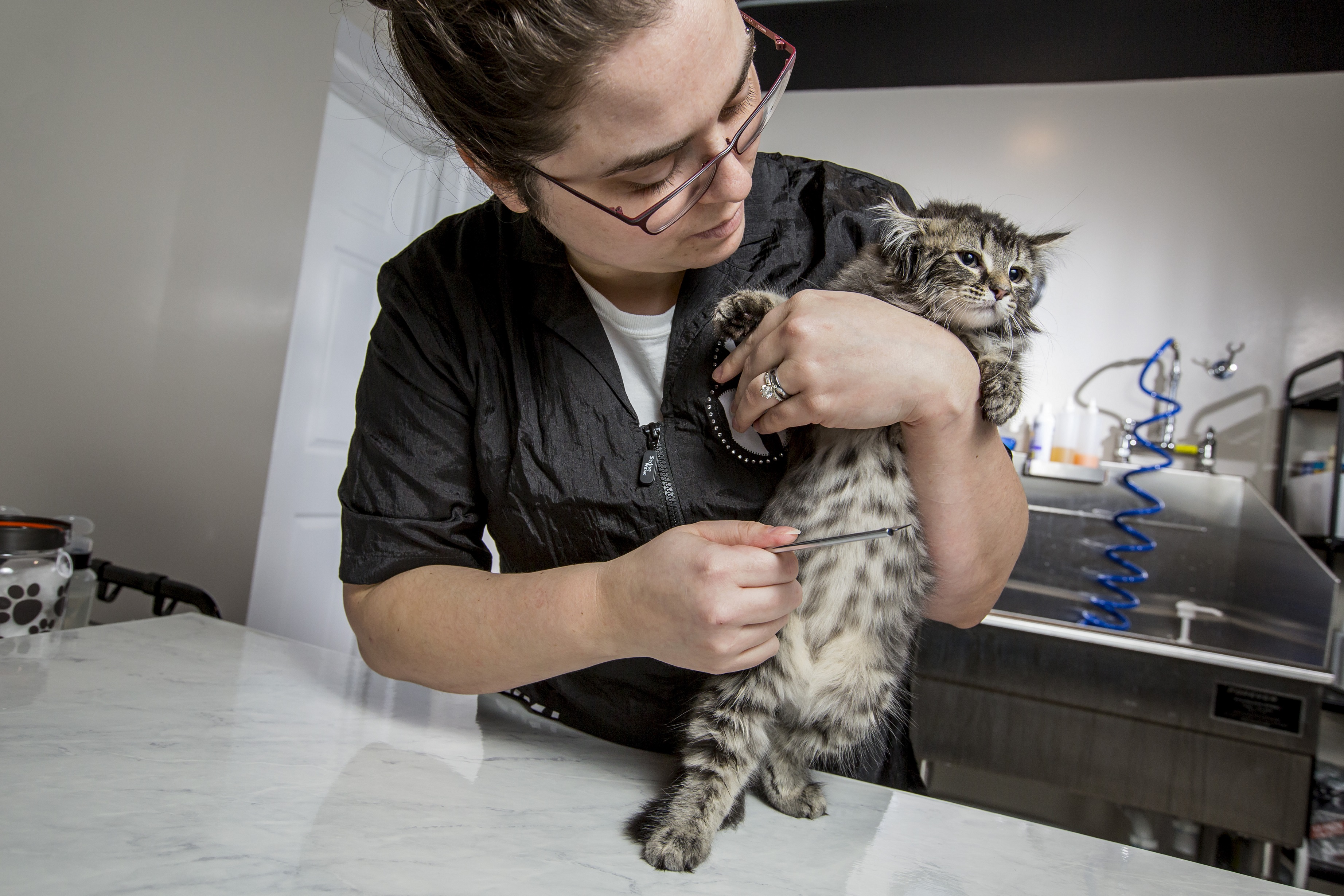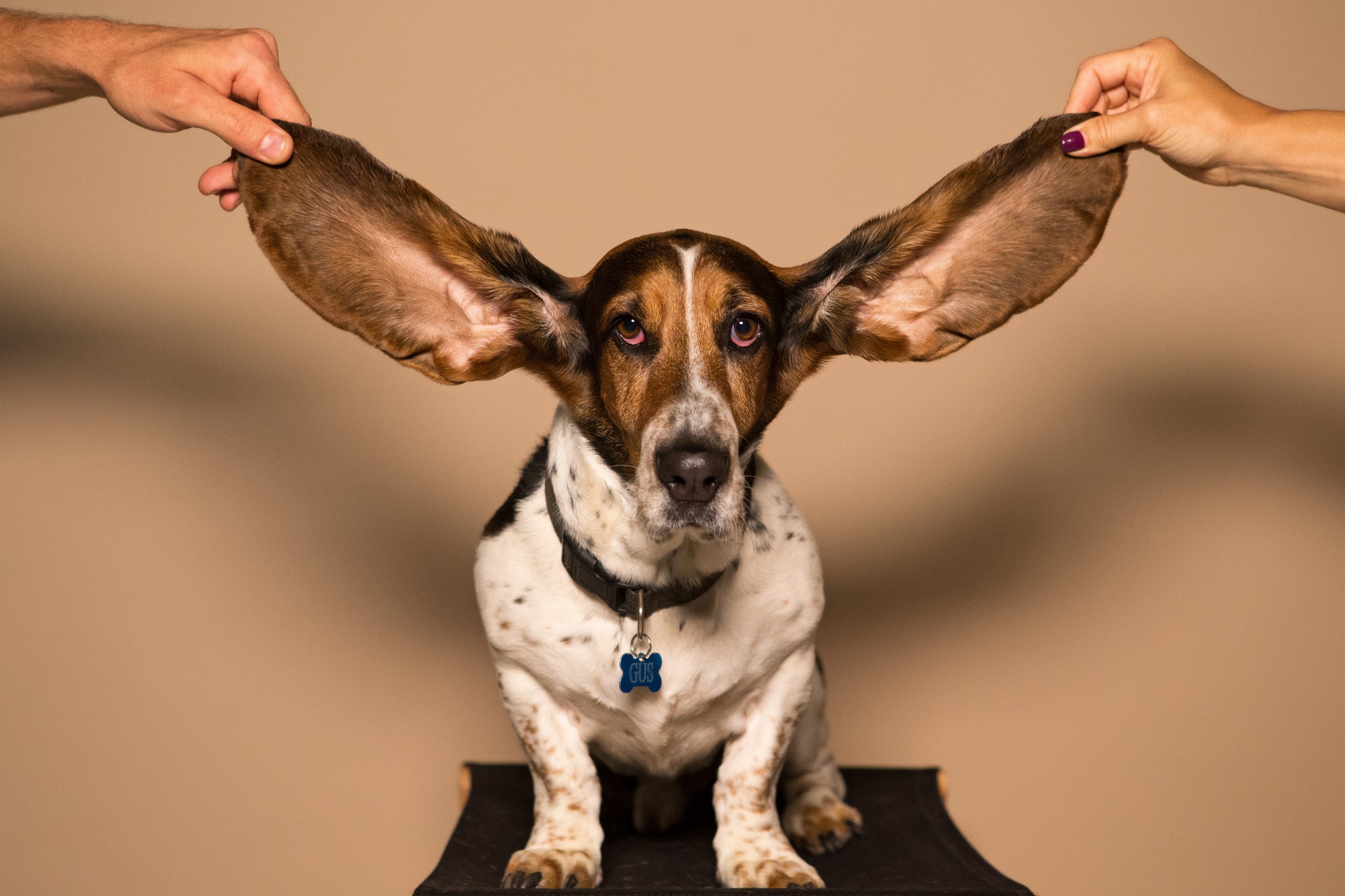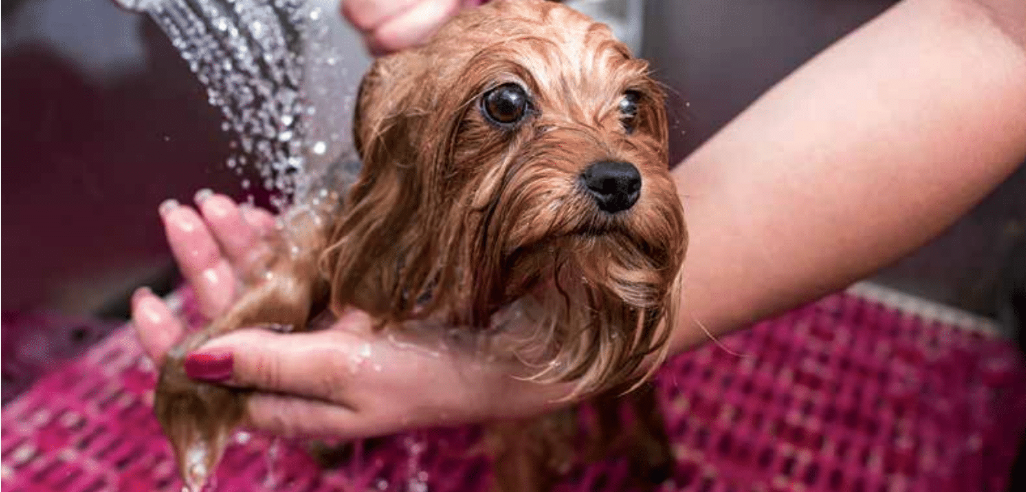Double-Coated Breeds: To Clip or Not to Clip
Daryl Conner //March 17, 2014//
Ask a room full of groomers if they think double-coated breeds should be clipped and you will find that this is one hot topic.
Reactions range from, “Shaving a double coat is unethical, I would never do it,” to, “I try to educate the owner so they understand the risks, but if they still want the dog clipped I will do a nice, professional job of it,” and even, “I shave my own double-coated pets, they seem much cooler and happier when I do.”
So what is a groomer to do? The controversy seems to be rooted in several facts.
Visual Appeal
A closely clipped double coat just looks bad.
“Fugly,” Regina Steiner, a groomer, said. “Ever seen a shaved German Shepherd? Not pretty.”
No matter how nicely the groom is executed, taking off that glossy guard coat leaves the dog a whole different color in many cases, and the fuzzy clipped undercoat that remains appears dull and lifeless. If the head and tail are not shaved the same length, they retain the normal color and sheen and can be more than tricky to blend to “match” the body coat.
Change In Coat Condition
Due to the way canine hair grows, sometimes a short clip results in limited, slow or uneven regrowth. This phenomenon, known as “post clipping alopecia,” is somewhat of an enigma, but it seems to happen more often in older dogs, dogs with underlying heath compromises or dogs who suffer sunburn after a very short clip.
“It’s important to recognize that on double-coated breeds, the undercoat grows on a different cycle than the primary hairs,” Barbara Bird, a groomer and grooming educator, recently wrote. “The secondary hairs are on a shorter growth cycle. Primary hairs of Northern Breeds do not shed as often, and can take years to regrow. Sometimes when we shave these breeds, the coat never comes back in the same, especially if shaving is done repeatedly. Shaving can permanently change the ratio of secondary to primary hairs, resulting in a fuzzy, thicker coat that is more difficult to maintain, or a sparse, patchy coat.”
The “Insulation” Factor
Experts argue that a dog’s hair coat does more than help keep the pet warm when the weather is chilly, but that a properly maintained double coat also insulates the pet from heat. When double-coated breeds undergo normal seasonal shedding, which is triggered by longer daylight hours, they drop much of their undercoat.
If this shedding coat is properly maintained and removed by brushing, bathing and drying, what is left is a small to moderate amount of undercoat and the long, glossy guard hairs. This longer, but reduced coat, helps to defend the pet from hot air, overexposure to the sun and even from biting insects.
Conversely, if the shedding coat does not drop out properly, the dog is left with volumes of dense, matted undercoat clogged up in the primary hairs. This can be a nightmare for the pet, the owner and certainly for the groomer. Such a coat does not “breath,” and an overheated dog with the potential for skin problems is often the result.
Bathing such a coat with a system designed to help remove packed undercoat, such as the Sav-Ur-Fur system, utilizes products that help smooth the hair shaft to encourage detangling and lifting away from the skin. For example, Best Shot shampoo and conditioning system, and careful use of a high-velocity dryer can help to save a badly matted double coat.
There are some cases, however, when there is little choice but to clip a neglected coat and hope for the best. Groomers and pet owners both report that a freshly clipped dog often acts like it has a new lease on life, behaving quite peppy once the dense coat has been removed.
There is a nice compromise solution for double-coated breeds that have been reasonably maintained. If the pet owner is concerned about the animal being too hot, the groomer can offer to remove as much undercoat as possible, and then clip the pets sanitary area and under chest from the front legs and continuing down the underline.
Go quite close, using a 4, 5 or 7F blade. This allows dogs to cool themselves by exposing their shorn underside to cool surfaces when they lie down. Utilizing snap-on combs, scissors or “chunkers,” the longer hair of the chest, ruff and rear legs can be sculpted to remove much of the length, without completely shearing the guard coat or excessively compromising the look of the dog.
This is an excellent time to educate the pet owner about proper brushing at home, the benefits of regular professional grooming, and how a well-groomed double coat not only looks wonderful, but helps protect their precious pet.





